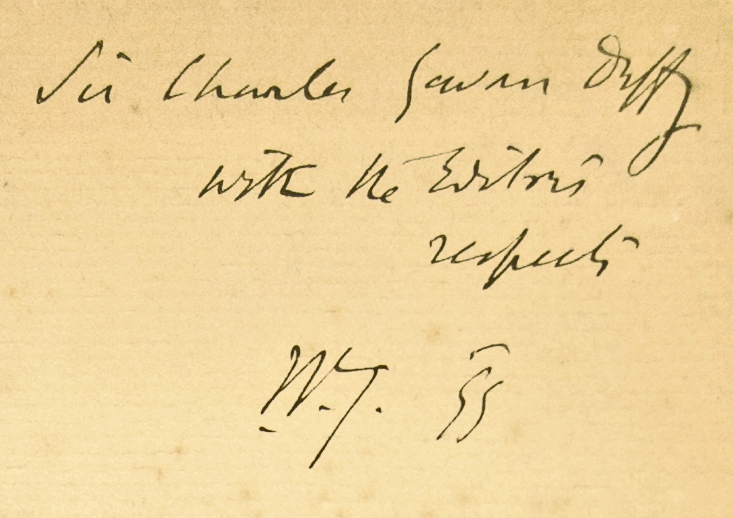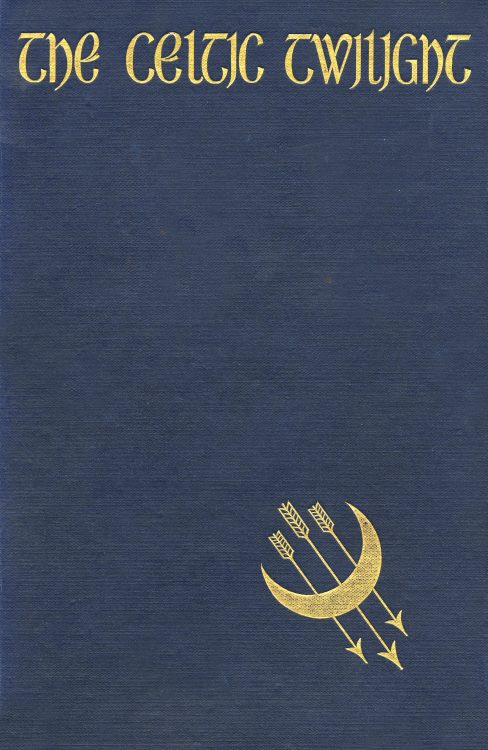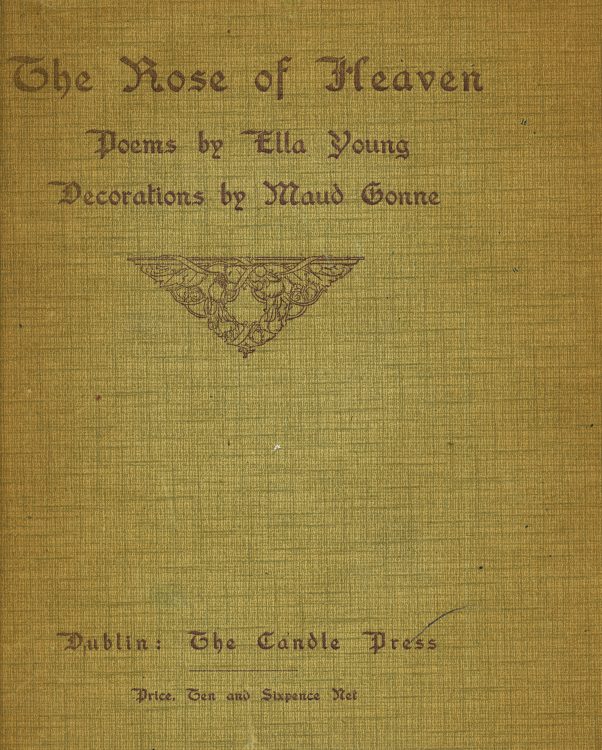Standish James O’Grady (1846-1928) inspired the Irish literary revival with English versions of the Irish sagas of mythic heroes like Cuchulain. O’Grady was a bit of a conundrum during his time, proud of his Gaelic heritage but also a Protestant pro-Union member of the Irish aristocracy—identities that were considered antithetical in the south in the late nineteenth century. Lady Gregory referred to him as a “Fenian Unionist.” Lady Gregory, W.B. Yeats, AE, and Pádraig Pearse all paid homage O’Grady’s influence.
Isabella Augusta, Lady Gregory, ed. Literary Ideals in Ireland. London: T. Fisher Unwin; Dublin: Daily Express Office, [1899].
This volume reprints a series of columns first published in the Dublin Daily Express between W.B. Yeats and John Eglinton (pseudonym of William Kirkpatrick Magee) in 1898. Topics included what subjects a national Irish literature should address, the role of the past, and how a national literature could offer wide appeal. Termed “Contrary John” by George Moore, Eglinton disputed the cultural nationalism espoused by his contemporaries as the thrust of the Irish literary revival. Eglinton was the editor of the short-lived literary magazine Dana (1904-1905).
This copy bears a rare dedication from Lady Gregory to nationalist Charles Gavan Duffy (1816-1903): “Sir Charles Gavan Duffy/with the Editor’s respect”
Yeats, W.B. The Celtic twilight. London: A.H. Bullen, 1902.
One of Yeats’s best known works of prose, The Celtic Twilight explores the ancient kinship between the Irish people and the inhabitants of the Land of Fairy. Part fiction, poetry, folklore, and diary, the volume reflects Yeats’s lifelong interests in spirituality and the occult. This seminal work on Irish folklore and myth inspired one of the several names for the Irish literary revival movement.
Isabella Augusta, Lady Gregory. The Kiltartan history book. Dublin: Maunsel and Co., [1909].
Volumes documenting Irish peasant stories and epic tales and myths were important to the cultural revitalization of Ireland. Lady Gregory noted that the first book of Yeats’s she had ever read was The Celtic Twilight. Inspired by Yeats and Douglas Hyde, whom she met in 1897 and befriended through her active membership in the Gaelic League, Lady Gregory collected folk stories in English and Irish from her tenants and neighbors around Kiltartan Village and other locations in County Galway. The stories in this “Book of the People” served not only to preserve oral traditions, but also to examine the active process of mythmaking through stories about Daniel O’Connell. Through the History Book and other volumes of folk stories, Lady Gregory took an active role in preserving Irish myth and legend from oral traditions rather than printed versions, capturing the Kiltartan dialect in which they were relayed to her.
Robert Gregory (1881-1918) was the only son of Lady Augusta and William Henry Gregory. He died during World War I when an Italian pilot mistakenly shot his plane down. W.B. Yeats wrote four poems about Robert Gregory.
Young, Ella. The Rose of Heaven. Dublin: The Candle Press, 1920.
With decorations by Maud Gonne.
Ella Young’s (1867-1956) circle at the turn of the twentieth century included Lady Gregory, W.B. Yeats, and Padraig Pearse. Her involvement with the Theosophical Society and later the Hermetic Society led to her study of mysticism and Irish folklore. She was a member of Inghinidhe na hEireann (Daughters of Ireland) and, along with Maud Gonne, set forth an agenda of social and gender equality by teaching girls Irish history. Young’s nationalism extended further into writing for Sinn Fein and running guns early on for the Irish Republican Army. After the Rising—in which she had no direct part—Young immigrated to the United States.
Maud Gonne MacBride (1866-1953) is usually best known as Yeats’s longtime muse and object of unrequited love. English by birth, Gonne was a complex figure who worked to support and preserve Irish culture and campaign for the republican cause. She was considered the embodiment of Ireland, especially through her iconic portrayal of Yeats’s Cathleen ni Houlihan.
She refused marriage proposals from Yeats several times, believing that Yeats was not radical enough in his politics for her (he had refused to convert to Catholicism), and that his unrequited love for her was good for his poetry. She married Major John MacBride (1868-1916), a hero of the Second Boer War, in 1903. Their son, Seán MacBride (1904-1988), was a human rights activist, politician, and a Chief of Staff of the Irish Republican Army (IRA).
Number 53 of 350 copies.





